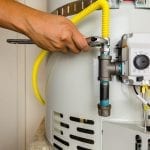Expert Guidance on Caring for Your Home's Hot Water System
Expert Guidance on Caring for Your Home's Hot Water System
Blog Article
Are you currently searching for resources around Tips on Maintaining a Water Heater?

Warm water is important for day-to-day comfort, whether it's for a refreshing shower or washing recipes. To ensure your warm water system runs successfully and lasts much longer, routine maintenance is essential. This write-up gives functional suggestions and insights on exactly how to keep your home's hot water system to prevent disturbances and costly repair services.
Intro
Maintaining your home's hot water system may appear overwhelming, but with a few straightforward actions, you can ensure it operates smoothly for several years to find. This overview covers every little thing from understanding your hot water system to DIY maintenance ideas and recognizing when to call in professional assistance.
Value of Keeping Your Warm Water System
Normal maintenance not only expands the life-span of your hot water system but also ensures it operates effectively. Ignoring maintenance can lead to decreased effectiveness, higher energy bills, and even premature failing of the system.
Indicators Your Warm Water System Demands Upkeep
Recognizing when your warm water system requires focus can stop significant concerns. Watch out for indications such as irregular water temperature, unusual noises from the heating system, or corroded water.
Purging the Hot Water Heater
Purging your hot water heater eliminates sediment buildup, boosting performance and extending its life.
Checking and Replacing Anode Rods
Anode rods prevent deterioration inside the container. Checking and replacing them when worn out is crucial.
Facility Concerns Needing Expert Help
Instances include major leakages, electric problems, or if your water heater is continually underperforming.
Regular Professional Upkeep Perks
Expert maintenance can consist of complete evaluations, tune-ups, and ensuring compliance with safety criteria.
Checking and Changing Temperature Level Setups
Adjusting the temperature level setups guarantees optimum performance and safety.
Do It Yourself Tips for Maintenance
You can perform numerous maintenance tasks on your own to keep your warm water system in leading condition.
Looking for Leaks
Regularly check pipes and links for leaks, as these can lead to water damages and higher costs.
Recognizing Your Hot Water System
Prior to diving into upkeep jobs, it's handy to understand the fundamental elements of your hot water system. Commonly, this includes the hot water heater itself, pipes, anode poles, and temperature level controls.
Regular Monthly Maintenance Tasks
Routine month-to-month checks can assist capture minor concerns before they rise.
Evaluating Stress Relief Valves
Checking the pressure relief valve guarantees it works appropriately and avoids extreme stress buildup.
Shielding Pipes
Shielding hot water pipes reduces heat loss and can conserve energy.
When to Call an Expert
While DIY upkeep is helpful, some issues need specialist proficiency.
Final thought
Normal maintenance of your home's warm water system is crucial for efficiency, durability, and expense financial savings. By following these suggestions and recognizing when to look for professional assistance, you can make sure a reliable supply of hot water without unforeseen interruptions.
How to Maintain an Instant Hot Water Heater
Before tinkering with your hot water heater, make sure that it’s not powered on. You also have to turn off the main circuit breaker and shut off the main gas line to prevent accidents. Also turn off the water valves connected to your unit to prevent water from flowing into and out of the appliance. 2. When you’re done, you have to detach the purge valves’ caps. These look like the letter “T†and are situated on either side of the water valves. Doing so will release any pressure that has accumulated inside the valves while at the same time avoid hot water from shooting out and burning your skin. 3. When the purge valves’ caps are removed, you have to connect your hosing lines to the valves. Your unit should have come with three hoses but if it didn’t, you can purchase these things from any hardware or home repair shops. You can also get them from retail stores that sell water heating systems. Read the user’s manual and follow it to complete this task properly. When the hosing lines are connected, open the purge port’s valves. 4. You should never use harsh chemical cleaners or solutions when cleaning your unit. Make use of white vinegar instead. It should be undiluted and you’ll probably use about 2 gallons. 5. Now flush your water heater. This task should probably take about 40 minutes. We can’t give you specific directions for this because the procedure is carried out depending on the type, model and brand of your heater. With that being said, refer to the user’s manual. 6. When you’re done draining the unit, you have to turn off the purge port valves again. Remove the hosing lines that you earlier installed on each of the water valves. Put the valve caps (purge port) back in their respective places and be very careful so as not to damage the rubber discs that are found inside these caps. 7. Now that everything’s back in place, check your user’s manual again to find out how to reactivate your water heating system. 8. Once it is working, turn one of your hot water faucets on just to let air pass through the heater’s water supply pipes. Leave the tap on until water flows smoothly out of it. https://www.orrplumbing.com/blog/2014/september/how-to-maintain-an-instant-hot-water-heater/

We had been guided to that editorial about Tips on Maintaining a Water Heater from a good friend on a different web property. Enjoyed our blog entry? Please quickly share it. Help others discover it. Thank-you for your time spent reading it.
Visit Report this page